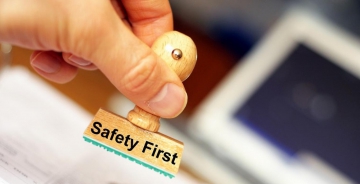In a short amount of time, the COVID-19 global pandemic has disrupted business operations in an unprecedented way and as we close out 2020, proving that operations will likely never be the same. From managing interruptions in the supply chain to rapid changes in the workforce, global business has risen to meet the challenges of the dynamic COVID-19 environment. Employee health and safety has been a primary focus throughout the pandemic. Because of this, some of the more routine environmental, health, and safety (EHS) compliance programs and procedures can be overlooked.
It may seem like 2020 has given all the answers to the question, “what else could go wrong?” but when it comes to the health and safety of employees and the environment, this question is still too important to go unexamined. Even if a company has not had a major EHS incident, the instability created by COVID-19 can stress the strongest EHS management systems and break those that were underdeveloped before. With significant changes in operations and increased scrutiny on health and safety, there is no better time than now to ensure that your company’s EHS compliance needs are met.
Why Stay Compliant?
Although a time before the pandemic seems like an alternate reality, companies are expected to maintain the same standard of EHS compliance as they were before. In March, the EPA stated that they did not expect to pursue penalties for routine compliance monitoring that was indisputably attributed to COVID-19. Some may have seen this as a justification to relax EHS management programs, but the EPA was careful to outline that only minor and lapses in monitoring indisputably attributed to the pandemic had the potential to be excused. Companies were still held responsible for maintaining compliance. Many state regulators issued their own policies, but these have also expired. By and large, regulatory compliance requirements have remained the same. Now is a critical time to reassess and address potential gaps in EHS compliance brought about by COVID-19 interruptions to ensure operating in the “new normal” are meeting the pre-pandemic standards.
Many businesses are feeling the strain of the pandemic. With stress levels high and resources stretched thin, it may seem daunting to address compliance gaps that have yet to present a major problem. However, it is critical to remember, “if you can’t afford compliance, you can’t afford noncompliance.” A great way to ensure you have coverage to focus on compliance is to bring in an expert resource on-demand with our RaaS service.
The risks of EHS noncompliance go far beyond the obvious risk to health, safety, and the environment. Failure to meet the regulatory requirements can result in heavy penalties, from hefty fines to the shutdown of operations. If EHS is not managed proactively, there is a potential for product loss and business interruption. Environmental impacts, like a chemical release, can harm a company’s relationship with the surrounding community and become quite costly to remediate. Failure to adhere to OSHA requirements can lead to preventable injuries, affecting the lives of a company’s most valuable resource, the employee. Maintaining compliance is key to protecting a company’s assets and ensuring success.
Compliance Tips:
Even with the disruption of the pandemic, compliance is necessary and required. There are many resources to help keep track of an organization’s compliance needs:
- Compliance Calendar- In a time where nothing seems certain, there is a constant - regulatory deadlines. A compliance calendar can help even the busiest EHS representatives keep track of regulatory requirements that vary between different states and facilities. Common deadlines may include Tier II/Form R Reporting, NPDES, OSHA 300 Log, and regulatory or internal inspection schedules.
- Legal Registers- A common cause of non-compliance is simply not knowing the regulations, or if the regulation applies to you. Legal registers provide an extensive list of federal, state, and local regulations that apply to a specified industry. They can be a helpful tool to ensure that a business is covering all regulations that apply to their operations.
- Training Matrix- From routine first aid training to hazardous waste management training, different roles require varying levels of training. A training matrix can help managers determine which trainings their employees need, to stay safe and prevent environmental incidents.
- EHS Compliance Checklist- Creating an EHS Checklist can help EHS or facility managers prioritize needs for their facility amidst the rising demands for their time.
Compliance Auditing
An EHS management system can rely on audits to uncover potential risks and gaps before they become major issues or noncompliances. Routine internal and external audits help identify areas of improvement that EHS managers may have overlooked.
Audit schedules have been uprooted with travel restrictions, but audits are still possible even as many areas of the country are approaching or are back in lockdowns. Throughout the pandemic, Antea Group has found various ways to successfully continue audits remotely. We also have an international network of over 5,000 consultants in 280 locations worldwide through Inogen Alliance to provide local coverage and audits for our clients.
Even in the midst of everything going on in the world, don't forget about your important compliance needs. If you need, we are here to help.
Want more news and insights like this?
Sign up for our monthly e-newsletter, The New Leaf. Our goal is to keep you updated, educated, and even a bit entertained as it relates to all things EHS and sustainability.
Get e-NewsletterHave any questions?
Contact us to discuss your environment, health, safety, and sustainability needs today.






